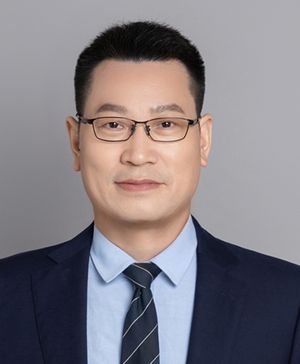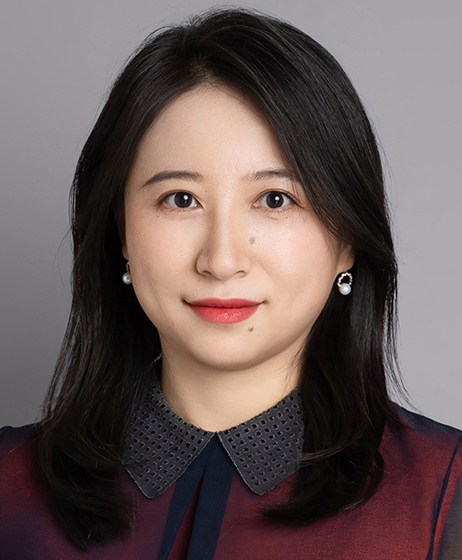From high-value patents to high-value transnational patent portfolios

This is an Insight article, written by a selected partner as part of IAM's co-published content. Read more on Insight
Changes in the international trade order in the context of large industries and large markets in China’s IP environment and culture have brought about development and rapid change in recent years. Chinese enterprises entering foreign markets and foreign enterprises entering the Chinese market need to be armed with effective patent measures and strategies.
The requirements of Chinese enterprises for patent applications have developed from an initial quantitative requirement regarding the quality of patents to the value of the patents, and further to the need for high-value patent portfolios that are transnational.
Similarly, foreign enterprises should pay attention to the quality of their patents in China when they arrange the layout of the transnational patent in their own country.
A large number of cases have proved that undesirable consequences arise from processing transnational patent applications by translating documents with the mere aim of achieving consistency.
What is a high-value transnational patent portfolio, and how is it made?
To answer those questions, this chapter discusses quality and value (not price) to explore the definitions and factors that influence high-value transnational patent portfolios. It will also discuss how to ensure the patent quality of transnational patent portfolios.
High-value patents
What is a high-value patent?
Generally, a high-value patent refers to a patent for which the patent owner can obtain high economic benefits through a series of patent or business operations. Specifically, these would be through infringement litigation, licensing, trading and other asset operations to obtain direct economic benefits.
Indirect economic benefits can also be obtained by building technological barriers, hindering the development of competitors, increasing bargaining chips and improving brand image.
Factors that influence high-value patents
Patent value is usually determined by patent economic factors and patent quality factors. It can be summarised in the following equation:
Patent value = patent economic factors × patent quality factors
The economic factors of patents reflect the influence or potential influence of patents on the economy of a country and/or the economic benefits generated, including with regard to technology (eg, technological progression or advancement, transformation and substitutability) and the market (eg, the industrial cycle, the industrial chain, and the regional distribution and scale in the market).
The main bodies that affect patent economic factors are, therefore, industrial technical experts (or research and development teams) and the market, who are essentially the promoters and practitioners of patent economic factors respectively.
Patent quality factors reflect the professionalism involved in the patent. Professionals, including enterprise IPR professionals, patent agents and patent examiners, are the main figures influencing patent quality, and the legal system is the verifier.
High-value transnational patent portfolios
The transnational distribution of markets and industrial chains makes it difficult for a single high-value patent to cover the upstream, midstream and downstream portions of an industrial chain. Covering all regional markets is even more difficult. It is, therefore, necessary to form a group or family of high-value patents or a high-value patent portfolio.
Compared with a single high-value patent, a high-value patent portfolio is more widely used in patent transactions, licensing, litigation and investment, and is more helpful in enabling the patent owner to lead the industrial chain, control the value chain and distribute the supply chain.
A high-value patent portfolio is a series of patents or a patent composition formed by taking into account technological considerations, the relevant industry, the region and other factors. A patent family is the basic unit for building a patent portfolio.
Through a patent family configuration and a combination of patent families, a patent chain and patent network are formed to target specific technologies and industries to obtain a patent portfolio.
The quality of each patent and each patent family in the portfolio has an overall impact on the portfolio. For example, there was a case in which a patent portfolio was adversely and seriously affected in infringement litigation, patent transactions and licensing owing to individual patent applications being rejected and patents being found invalid in standard-essential patent litigation/licensing cases concerning 3G/4G communication standards. This reduced the profitability of the entire patent portfolio.
Patent quality of patent families
When using a patent family, it is common to ask a local agency to apply for the first case (the local case) in accordance with the requirements of domestic law. It then enters other countries and regions through various international treaties to apply for the second case, the third case and further cases (transnational cases).
For the convenience of analysis, the patent quality of a patent family is divided into two parts: the patent quality of the first case and the patent quality of the transnational case.
Patent quality of the first case
There are at least three factors that affect the quality of the first case: technology, industry and the law.
Although technological and industrial factors themselves have nothing to do with patent quality, their presentation in patent documents (the degree of reduction in technology and industry) is included in the category of patent quality.
The technological presentation involves presenting the completeness, correctness and expansibility of the technology. The industrial presentation involves presenting coverage and application scenarios of nodes in upstream, midstream and downstream portions of the industrial chain.
Although technology itself has no national boundaries, each country and region has its own technological and industrial standards and norms, as well as an industrial ecology. If patent agents fail to take those differences into account when presenting or reflecting them in their documents, patent quality will be fatally impacted.
The legal factors mainly comprise patent laws and regulations, judicial interpretations and the judicial practice of the country or region where the first case is presented that must be followed in the process of patent formation.
A good foundation must be laid to integrate the legal system of the country or region to which the transnational cases belong. Legal factors are present throughout the process of patent formation, including the application, examination and certification stages.
Among the relevant legal factors, the primary considerations are the novelty, obviousness and practicality standards applicable to all countries and regions involved in the patent family, as illustrated by the following examples.
If the first case is a US patent and the second case is a Chinese patent, it would seem to be highly efficient, at least on a superficial level, to adopt a method in which a provisional application is made to the United States, and a sketch is matched with a simple description; however, a lot of content is not recorded in the priority document, especially the addition of drawings, and when applying for a Chinese patent, the risk of not establishing the priority claim is very high. Moreover, if there is a disclosure that affects patentability between the priority date and the transnational patent application date (eg, the patentee has been selling products publicly), the patentability in China will be dealt a fatal blow.
If the first case is a Chinese patent and the second case is a US patent, usually, the applicant’s own publicly disclosed behaviour within the past year will be recognised as prior art in China; however, it will not constitute prior art in the United States, so the description of prior art in the application must be particularly careful not to reduce the novelty nor inflate the obviousness of the US patent.
Further, given that it may not be protected in China or the lack of uniformity is not protected in a patent but can be protected in the United States, the written specification of the Chinese patent application documents, the technological scheme of the invention, various specific embodiments, expansion examples and technological effects can and should be disclosed in as much detail as possible to avoid a failure in support for priority in the US patent application.
In addition to legal factors, it is important to control the procedure. It is best to coordinate the layout of the patent family and optimise the procedure in the first case. For example, prioritised examination, rapid pretrial and other means can be used to speed up the examination process of the first case to uncover prior art and any defects of the case at an early stage, which will maximise the effectiveness of the case before the second case is filed and prevent new problems from arising in relation to transnational cases.
Transnational patent quality coefficient and transnational patent quality
The quality of a transnational case is related to the quality of the patent in the first case. It is also affected by the transformation from the first case to the transnational case, which is a point that is often ignored.
The quality-influencing factor of the transformation from the first case to the transnational case is referred to as the transnational patent quality coefficient (the coefficient):
Transnational patent quality = coefficient × patent quality of first case
The patent quality of the first case is determined by the enterprise IPR professionals and the local agency. The coefficient is jointly determined by the enterprise IPR professionals and the foreign patent agency.
Factors that affect the coefficient include matters of language, legal factors, and the industry or market:
Coefficient = language factor × legal factor x industry or market factor
The language factor refers to the comprehension, expression and logic of the language used. Comprehension is the ability to analyse the patent documents of the first case. Clear expression and logic are necessary to reproduce the language for transnational cases.
For example, the custom is to ask translation agencies for a literal translation in scenarios where the first case is a US patent and an application for a Chinese patent is being made. On the surface, this practice satisfies the consistency requirement, but there is a great risk to the quality of the Chinese patent: not only are the accuracy and professionalism of technical patent terms difficult to convey in a manner that meets the requirements of Chinese laws and regulations, but the semantics must also be correct and unambiguous to avoid claims from being rejected as unclear.
Technical solutions that cannot be implemented or deviation from what is expected in the interpretation of the scope of rights, among other issues, must also be carefully considered.
Further, a translator who does not have a full understanding of the technology will be unable to spot errors in the description or other errors in the original patent, and may miss the opportunity to correct them, which may lead to an irretrievable failure in the patent application.
On the other hand, where the Chinese patent is the first case and an application for a US patent is being made, even if a US patent agent is asked to deal with the application directly, although the agent has advantages regarding English expressiveness and logic, their understanding of Chinese will often not be sufficient, and their inability to understand the original meaning may lead to the same risks as those already mentioned. A Chinese word may correspond to multiple English words, and the meaning of each English word, even if apparently similar, can be very different. If an accurate word is not selected and used, the English expression may end up being very different from the original meaning in Chinese.
Industry and market factors refer to the product technology, the industry structure, the market distribution and the life cycle. When applying for a transnational patent application, it is necessary to adjust the transnational patent application in accordance with the local product technology, the industry structure, the market distribution and the life cycle so that the transnational patent application matches the above-mentioned industry and market factors. The adjustments needed for industry and market factors include the type of patent, the subject matter and the scope of the claims, whether the application is through the Paris Convention or the Patent Cooperation Treaty, and whether it is necessary to accelerate the examination.
The legal factors refer to the level of professionalism reflected in the requirements of patent laws and regulations, judicial interpretations, judicial practice and precedents of the countries or regions where the transnational patent will belong.
For example, where the Chinese patent application is the first case and the transnational case is the US patent application, the title, background, summary and claims of the patent should be adjusted to adapt to many cases; in particular, there are obvious differences in the requirements of the two countries regarding the background and the summary.
For the US patent, if the section on background is not filled in properly, this may lead to problems regarding the applicant-admitted prior art. In addition, the summary part can be omitted in US patent practice to avoid limiting the scope of rights.
Where the US patent is the first case and the transnational patent is the Chinese patent application, if the section on background is very short or has no substantive content, or the summary part is missing, problems may arise in the Chinese patent application, such as issues regarding incomplete disclosure in the description, lack of clarity in the technical solutions and unsolved technical problems.
Obtaining high patent quality from patent family
How should the aforementioned patent quality problems be resolved in respect of transnational cases?
First, enterprises must establish a system for cultivating a high-value transnational patent portfolio or employ strategic thinking. If the enterprise itself lacks ability or experience in this field, it can hire external experts for guidance.
Second, an agency should be selected that has the ability to deal with both the first case and the transnational case (ie, an agency with a one-stop service ability and cultivation ability for a high-value patent portfolio). The agency must be able to provide multinational patent application services and a full life cycle of service capabilities, from patent layout to patent operation.
The ability to provide multinational patent application services includes the ability to handle local cases and to handle import cases and export cases. In this way, the requirements regarding the language factor, the technological factor, the industry factor and the legal factor can be implemented.
Having the ability to handle the full life cycle from patent layout to patent operation also means integrating considerations regarding the back-end operations (eg, transnational patent operation and practical experience) into the front-end operations, so that the patent has the ‘gene or ability to fight at the beginning of the patent layout’.
Third, a dynamic, full life cycle quality inspection mechanism should be established. The indicators for inspection should include those for technological, industrial and legal factors and should run throughout the whole life cycle of the patent portfolio, rather than only at the delivery stage of the patent application documents.
Comment
Creating a high-value patent portfolio requires high-value patent families. High-value patent families must pay attention to the quality of the transnational patents, which can be achieved through systematic solutions.







